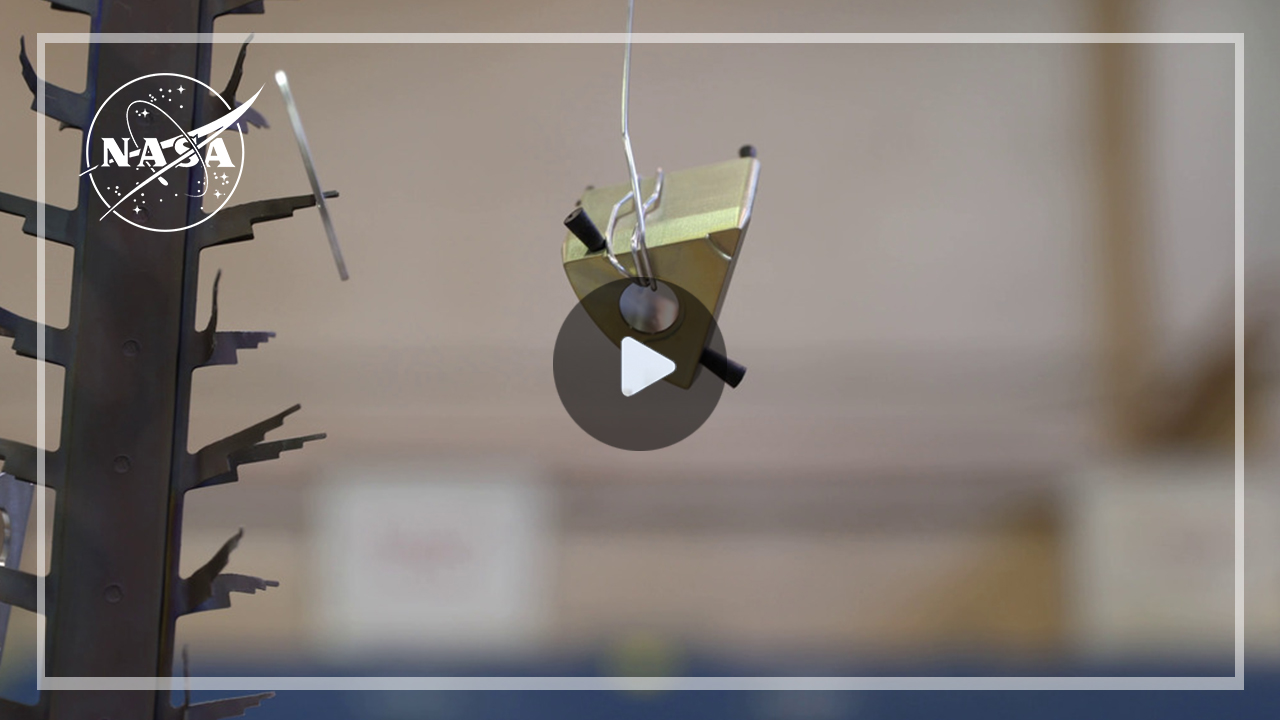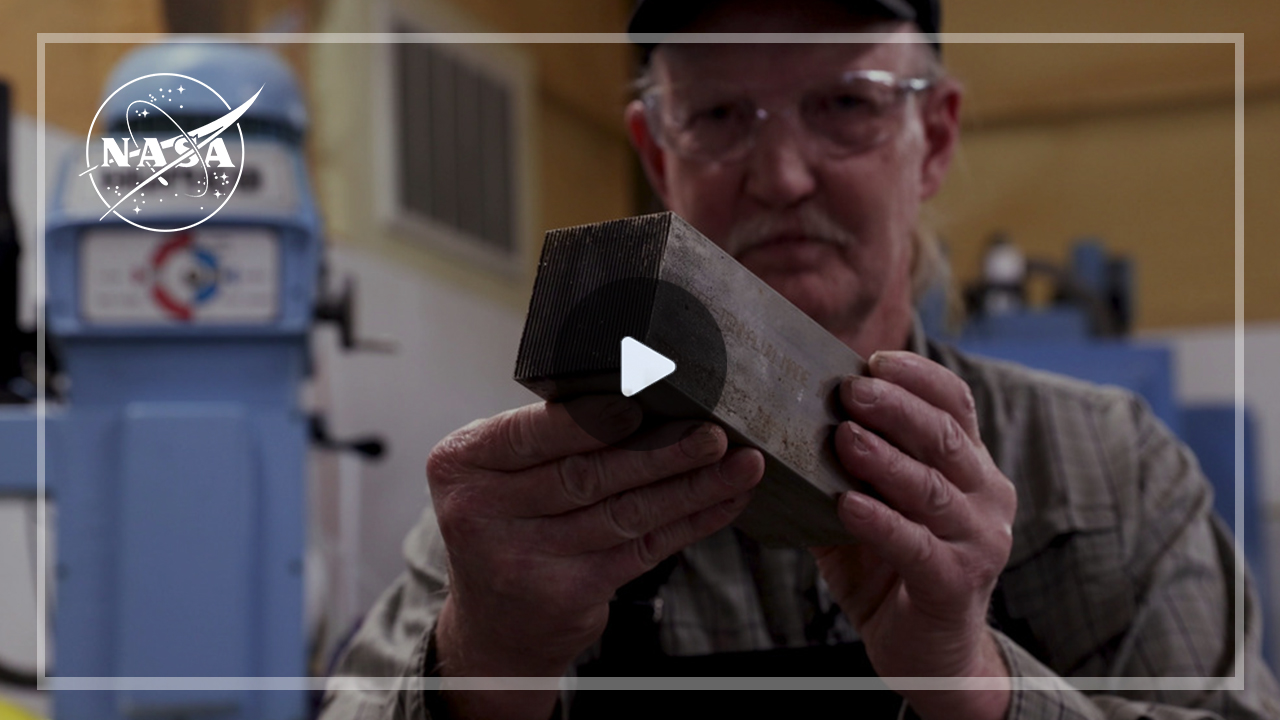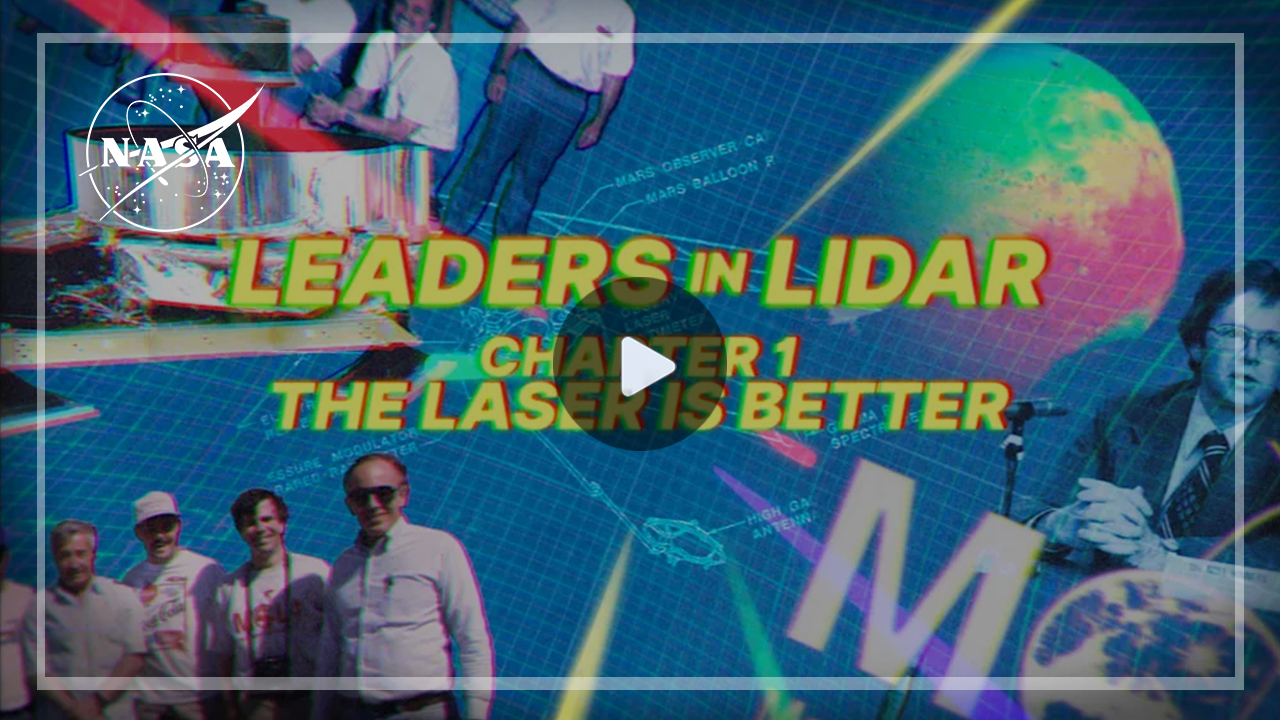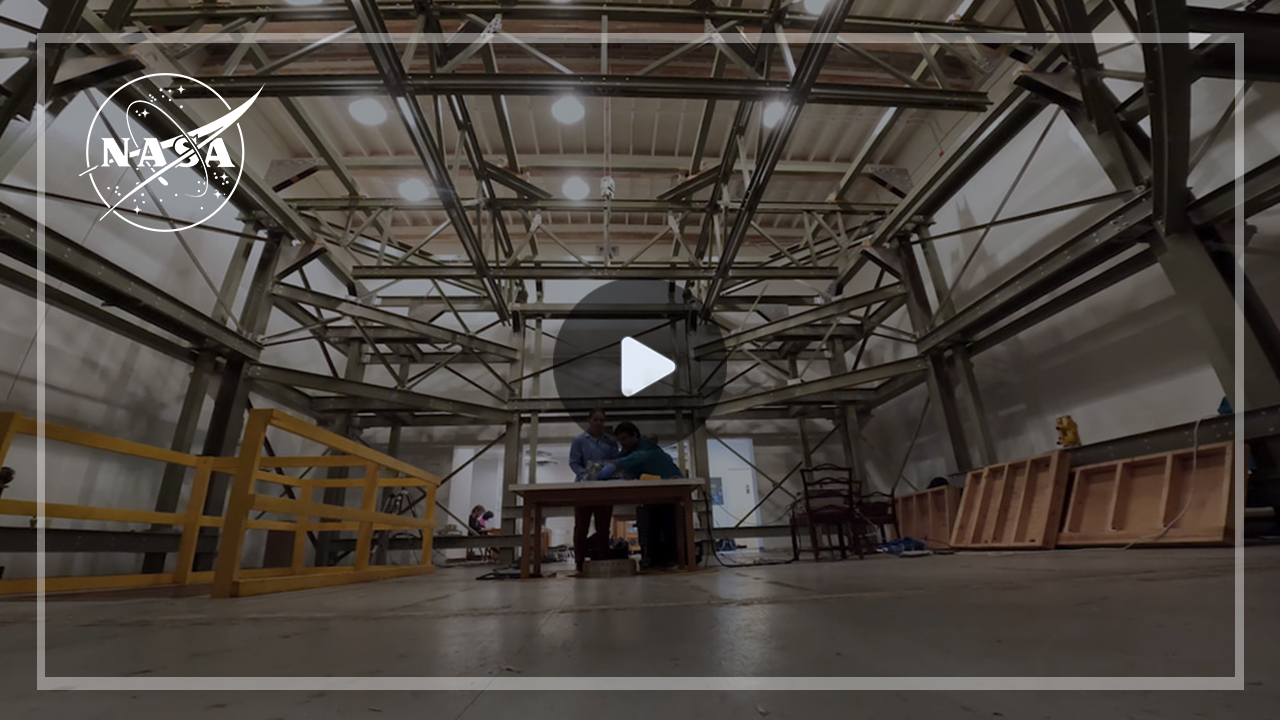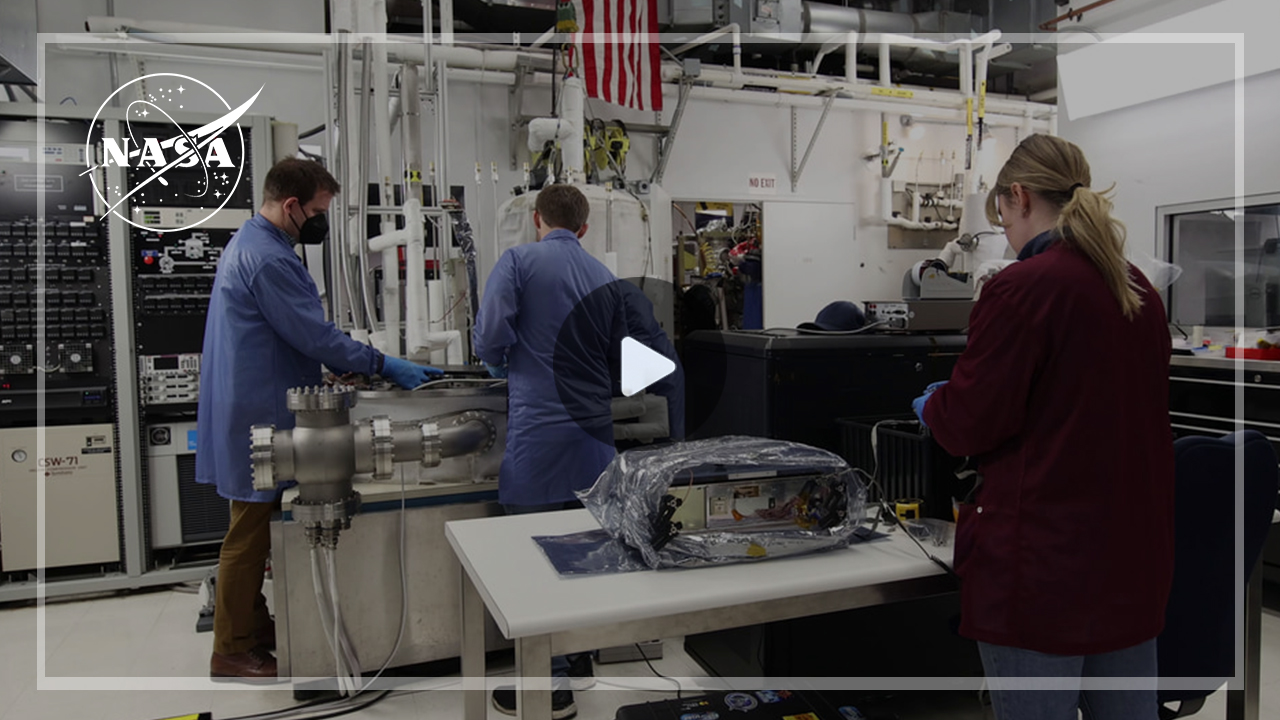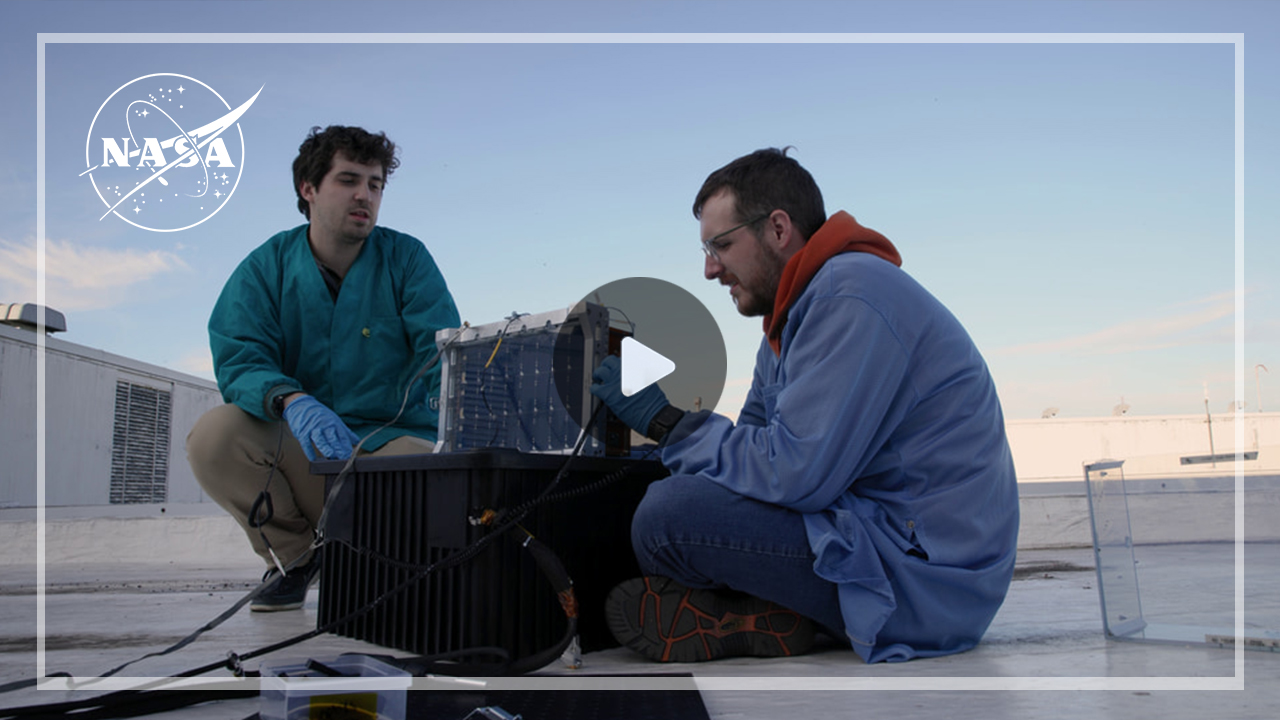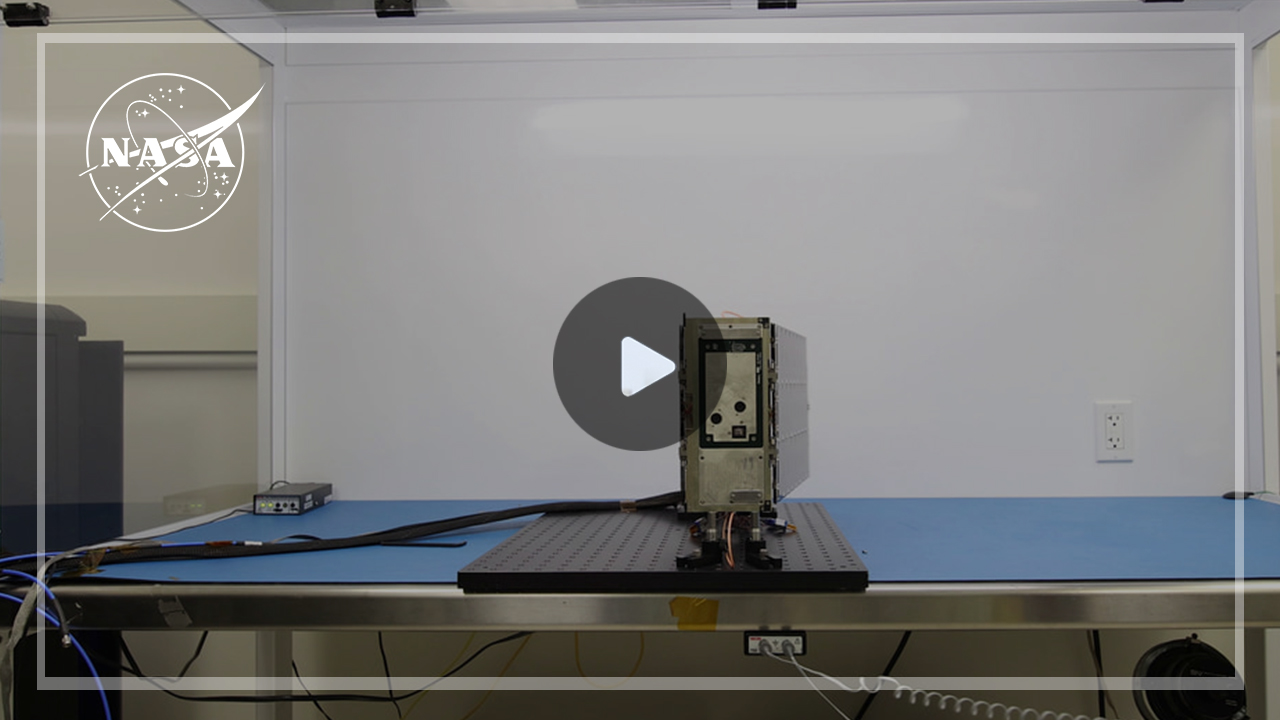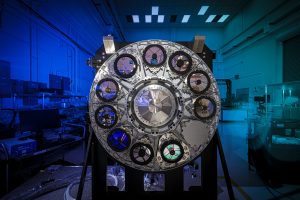
Engineering and
Technology Directorate
ETD Multimedia
Highlighting ETD supported missions in planetary science, astrophysics, Earth observing, and solar science.
Visit the Goddard Scientific Visualization Studio and the Goddard YouTube Channel for more videos.
Roman Deployment Test
Technicians recently tested two major deployments for NASA’s Nancy Grace Roman Space Telescope: the Deployable Aperture Cover (DAC) and the Solar Array Sun Shield (SASS). The DAC will protect Roman’s instruments before launch, then swing open once the telescope is in space. To simulate weightlessness, engineers…
Roman Space Telescope Solar Panels are Fully Installed
Over the course of two days, eight technicians installed solar panels onto the outer portion of NASA’s Nancy Grace Roman Space Telescope. Each of the six panels is about 23 by 33 feet (7 by 10 meters), fitted with photovoltaic cells which will harness energy from sunlight to power the observatory. The solar panels were…
Venus’ Alpha Regio – NASA’s DAVINCI Mission
Scheduled to launch in the early 2030s, NASA’s DAVINCI mission will explore Venus with both a spacecraft and a descent probe. DAVINCI’s probe will be the first in the 21st century to brave Venus’ atmosphere as it descends from above the planet’s clouds down to its surface…
NASA’s Roman Space Telescope Hardware Highlights: Winter/Spring 2025
Every day, the Nancy Grace Roman Space Telescope moves closer to completion. This video highlights some of the important hardware milestones from this journey. Roman now exists as two main pieces…

NASA’s Nancy Grace Roman Space Telescope: Systems, Assemble!
In September 2024, the Nancy Grace Roman Space Telescope passed a key milestone and was approved for the next stage of construction. Work on the main systems that will make up the final spacecraft is finishing, and the team at NASA’s Goddard Space Flight Center…
BurstCube Completes Magnetic Calibration
The BurstCube mission team visits the magnetic calibration chamber at NASA’s Wallops Flight Facility in Virginia, in this video. The first shot shows the exterior of the building. The ensuing shots show the interior. The grey beams are made from carbon fiber and are held…
BurstCube Completes an Open-Sky Test
This video shows engineers conducting an open-sky test of the BurstCube satellite’s GPS at NASA’s Goddard Space Flight Center in Greenbelt, Maryland. This CubeSat will detect short gamma-ray bursts, brief flashes of the highest-energy form of light. Dense stellar remnants…
How NASA Uses Simple Technology to Track Lunar Missions
NASA is using a simple but surprisingly effective technology called Laser Retroreflective Arrays (LRAs) to determine the locations of lunar landers more accurately. They will be attached to landers sent to the Moon as part of NASA’s Commercial Lunar Payload Service (CLPS) initiative. LRAs are inexpensive, small, and lightweight.
Test, Test, and Retest – Hubble’s Servicing Mission 1 (Frank Cepollina)
Embark on a cosmic odyssey with Frank Cepollina, a driving force behind the success of Hubble’s Servicing Mission 1. Discover firsthand accounts of his instrumental role in the mission, revealing the innovative solutions and relentless determination that revitalized the Hubble Space Telescope.
NASA’s Roman Space Telescope Hardware Highlights: Spring 2024
Every day, the Nancy Grace Roman Space Telescope moves closer to completion. This video highlights some of the important hardware milestones from part of this journey. Components and systems are built separately, tested, and then integrated with larger parts of the spacecraft to carefully build the full telescope…


